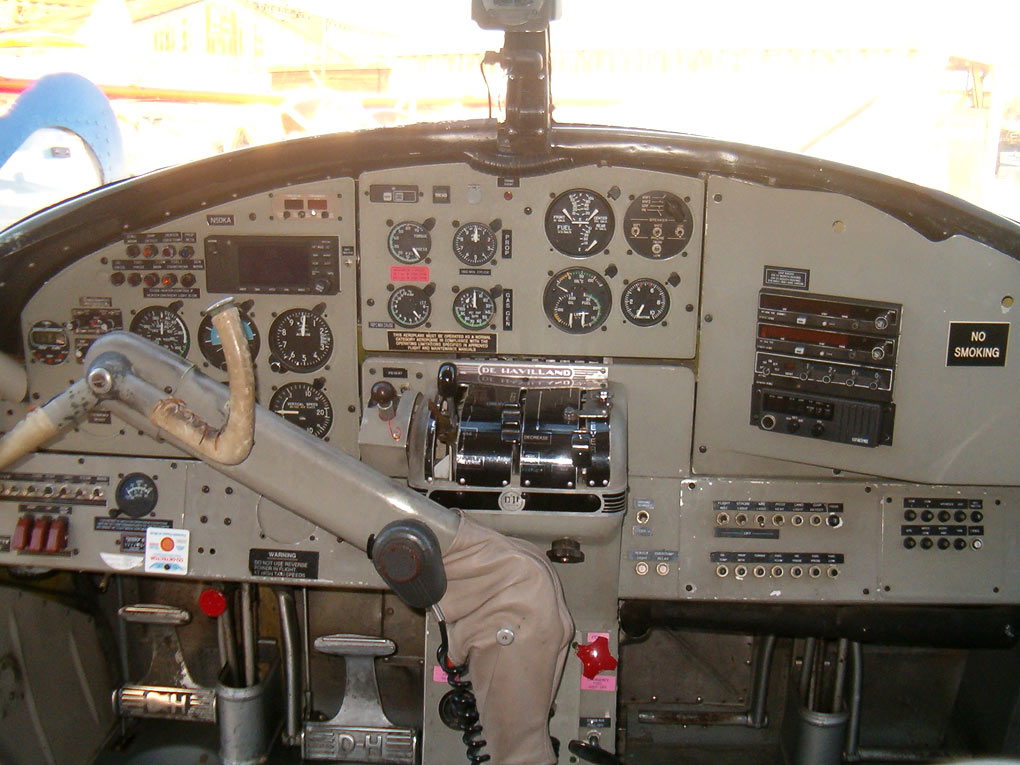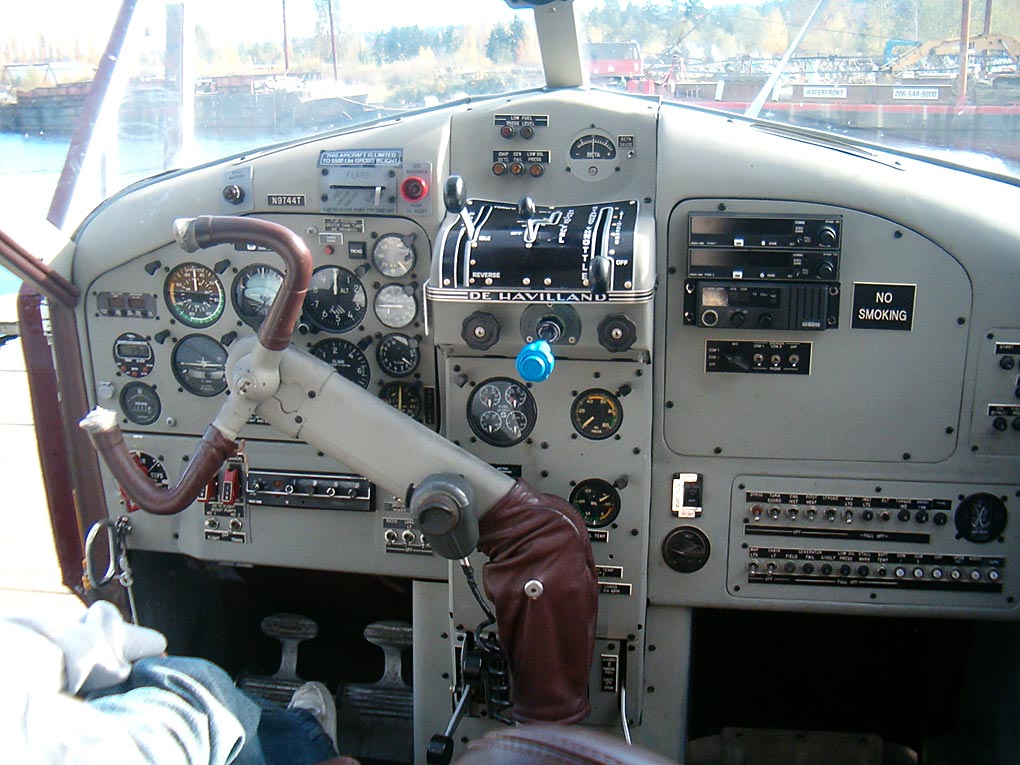Page 1 of 1
Water landings

Posted:
Mon Mar 29, 2010 9:10 pmby Mazza
Okay you know how you use ACT for normal runways landings?
My question is what if (real life) you have an amphibious aircraft and want to land in a large body of water? Do you have to tell the ACT about it? If so what do you say?

Re: Water landings

Posted:
Mon Mar 29, 2010 9:19 pmby Tyler012
"Seattle Center, I'm going to put this aircraft in the drink now, K bye!"
Re: Water landings

Posted:
Mon Mar 29, 2010 11:26 pmby JoBee
You will be flying under VFR and 99.9% of the time landing in uncontrolled airspace (in the US) so you will be required to talk to nobody.
Things are different if you are landing at a seaport with regular traffic. Most times they will have an advisory frequency listed on the sectional. Those would be treated like any non-towered airport.
If you are in close proximity to a controlled field you would most likely talk to them.
It is also common for float planes to be equipped with marine band radios, while on the water you are a boat and must follow their rules.
cheers,
Joe
Re: Water landings

Posted:
Tue Mar 30, 2010 1:42 amby Mazza
Oh cool. Thanks

Re: Water landings

Posted:
Sun Apr 04, 2010 10:32 pmby -Crossfire-
I have never heard of an aircraft having a marine band radio.
You do not have to follow marine rules when you are on the water... you follow aviation rules because you are an aircraft. Maintain 500 feet seperation from any surface craft unless you are in the process of taking off or landing.
In Canada, water aerodrome frequencies are found in the Water Aerodrome Supplement, just like land frequencies are in the Canada Flight Supplement. Could be a TFC, FSS, or tower frequency. If you are using a random lake, just broadcast your intentions on a traffic area frequency.
Re: Water landings

Posted:
Mon Apr 05, 2010 1:21 amby JoBee
I have never heard of an aircraft having a marine band radio.
Guess that means they don't exist, cause you've never heard of it.
Here's the best 2 pics I could find in the short amount of time I dedicated to looking.
This is an Otter on floats. The radio on the bottom of the stack is a Marine Band radio....

This is a Beaver on floats. That thing next to the No Smoking sign is a Marine Band radio...

BTW, both of these planes break that 500 foot separation rule daily. If they didn't, they wouldn't work.
Re: Water landings

Posted:
Thu Apr 08, 2010 12:50 pmby -Crossfire-
Relax there big guy.... thanks for the pictures.... never seen it before. Definately not used here in the north!
Re: Water landings

Posted:
Thu Apr 08, 2010 2:01 pmby JoBee
[quote]Relax there big guy.... thanks for the pictures.... never seen it before.
Re: Water landings

Posted:
Sat Apr 10, 2010 9:18 amby westside
As someone who lives in a community and works on the water on the west coast of Vancouver Island it is common for float planes to have marine band VHF radios. It is also common for a float plane landing in the harbor or in fact anywhere on the coast to announce their landing and taking off intentions on the appropriate frequency(121.50 here). This is to give other aircraft in the area a warning of what traffic is doing. In the summer here, it not uncommon to have several aircraft and Coast Guard helicopters landing and taking off in one day.
It is also my understanding that once the floats hit the water the aircraft must follow the Collision Regs set out by Transport Canada (in Canada, Not sure about elsewhere).
So once on the water the aircraft follows the same rule as a boat would. I believe there are rules specifically related to float planes in the Collision Regulations.
Re: Water landings

Posted:
Sat Apr 10, 2010 9:31 amby olderndirt
appropriate frequency(121.50 here).
121.5 Mhz is the universal 'emergency' frequency - as in Mayday, Mayday!!!
Re: Water landings

Posted:
Sun Apr 11, 2010 9:52 amby westside
My apologies. We have two frequencies on our aircraft radio at the station and that was the one that came to mind first.
It make sense that 121.50 would be tuned in at our lifeboat station. We monitor both. The local frequency is 123.something I will find out and make it right.

Re: Water landings

Posted:
Sun Apr 11, 2010 10:53 pmby JoBee
This is from an FAA document titled "SEAPLANE, SKIPLANE,and FLOAT/SKI EQUIPPED HELICOPTER OPERATIONS HANDBOOK" dated 2004. It is, to my knowledge, still current.
14 CFR PART 91, SECTION 91.115
RIGHT-OF-WAY RULES:WATER
OPERATIONS
RULES OF THE SEA
According to United States Coast Guard (USCG) regulations, the definition of a vessel includes virtually anything capable of being used for transportation on water, including seaplanes on the water. Therefore, any time a seaplane is operating on the water, whether under power or not, it is required to comply with USCG navigation rules applicable to vessels.
Those interested in reading the complete document, downloadable as 4 PDF files, should search the FAA database for faa-h-8083-23-1.pdf
cheers,
Joe
Re: Water landings

Posted:
Fri Aug 20, 2010 8:37 amby Caspian
I'd have thought that planes when landed would have to abide by the IRPCS (The International Regulations for the PRevention of Collisions at Sea). The ones that would apply to planes would then be:
1. Power gives way to sail.
2. If on a collision course with another vessel, turn to starboard.
3. (This is the most important one) Avoid collision at all costs - if you're on a collision course even if you have right of way, take avoiding action if the other vessel does not alter its course.
Of course, these might not apply to aircraft in the water - but I'd think they probably would. I'm a sailing instructor, and I've never had to deal with such a situation 8-)




